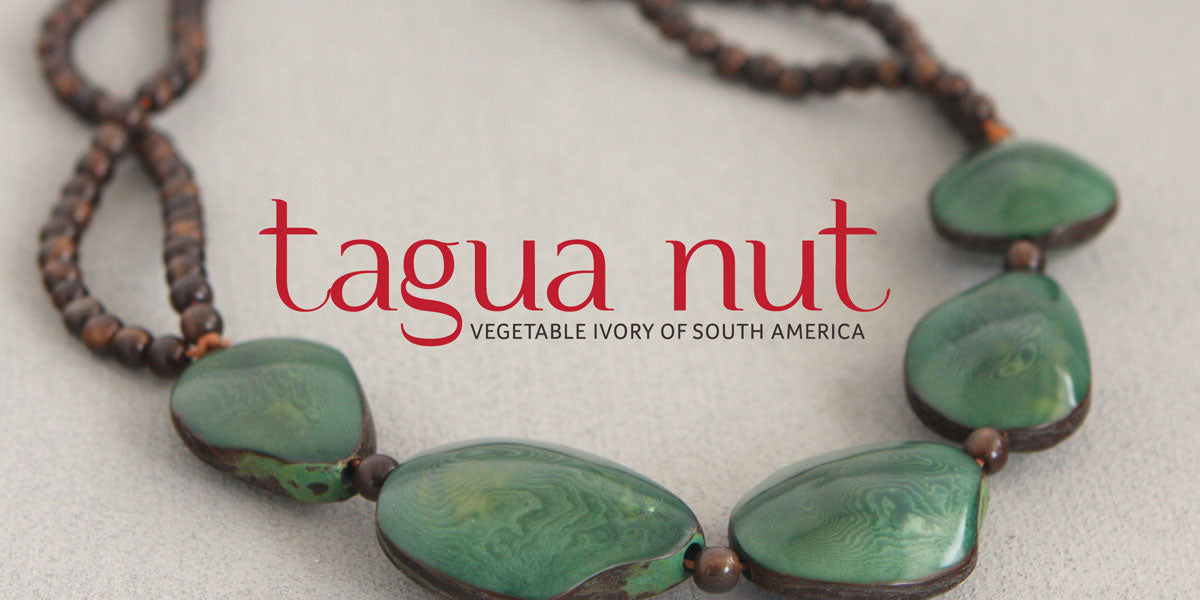
Featured on necklaces, rings, and bracelets, this special material looks and feels like elephant ivory. But it’s actually a nut! Read on to learn more about Tagua nut and its history.
What is Tagua Nut?
Tagua nut is a seed pod that grows on a particular species of palm tree. These trees are native to South America’s tropical rainforests. About a month after the pods mature and fall, they become hard and dry. On the outside, they have a brown flaky skin: inside there is a hard white material. This material has a cellular structure that resembles animal ivory –hence Tagua’s other names, ‘vegetable ivory’ or ‘ivory nut’.
Tagua nuts have long been used for adornment. Among indigenous communities of South America, Tagua nuts represented sacred, feminine energy. Every member of a tribe would be gifted a Tagua nut to wear as a pendant. The belief was that the nut maintained harmony among family members and friends. The Tagua would be carved, sliced, polished and dyed in various colors to make jewelry.

History Of The Tagua Trade
Because it is naturally durable and similar to elephant ivory, Tagua nut has been used to make a wide variety of household objects. Before the advent of plastics, the garment industry used Tagua nut to make buttons. Historically, Tagua was also fashioned into chess pieces, cane handles, and dice. Unfortunately, the development of synthetic materials ultimately killed off the Tagua trade, an industry that once spanned three continents.
Tagua Nut Returns
Now available from many jewelry vendors, Tagua has made a comeback! Over the years, there has been a growing international concern over the slaughter and near extinction of ivory producing animals like elephants, walrus, and whales. Tagua nut is a cruelty-free alternative! With a strong worldwide market for eco-friendly jewelry, Tagua is now fashioned into a host of ornaments like necklaces, bracelets, earrings, and even wristwatches.
How To Care For Tagua Nut
Because it is a completely natural product, Tagua jewelry requires special care. Rings made of Tagua should be removed before washing hands. Jewelry should never be stored in damp, unventilated conditions. Overexposure to the sun can result in cracked surfaces. If an item gets submerged in water, it should be dried out in a well-ventilated place.


